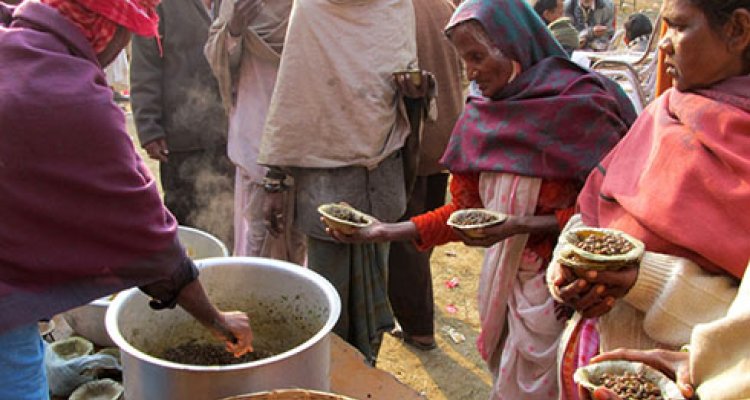
Internship
Knowledge for action: who and benefits from food distribution and how?
Whilst poverty decreases and hunger is becoming less common in the world, subsidised food distribution remains a key social security measure to reduce food deprivation, especially in emergency situations such as drought or conflict. At the same time, many food distribution measures aim to improve utilisation of nutritious foods and to curb the increase in obesity. There is an increased dependency on supermarkets and fast foods among middle class households in low to middle-income countries in Africa.
According to experts, people are changing their dietary habits and this is creating an obesity crisis in African countries. Increasingly, countries are facing the double burden of under- and over-nutrition. They respond typically with social security measures aimed at influencing availability, access and utilisation of nutritious foods. Feeding programmes are set up in response to emergencies or shocks. Feeding schemes via schools, food banks or early childhood development are common measures for mitigating longer term vulnerability and nutrition insecurity, and they may serve also to promote healthier dietary behaviours.
Essentially, food and nutrition programmes try to improve consumption of food in situations where people are left with relatively limited or poor quality food choices (which can be due to supply and/or demand characteristics). Especially under these conditions, but not exclusively, the allocation and distribution of food to and within groups or households becomes relevant. But, what do we know about allocation and distribution processes and how can we use this in optimising the most common interventions addressing food and nutrition security: food distribution or feeding schemes?
Questions and approach
What effects can we expect of food distribution interventions on household behaviours regarding food production, purchases, spending, choices, decisions, or for instance consumption? Would it influence or relate to:
- transferring feeding responsibility to the food distributing agencies and less attention to nutrition / food in HH (less expenditure on nutritious food; less volume / frequency of procurement of fresh foods; less nutritious food served to child);
- giving more attention to nutritious foods knowing the relevance of proper feeding at school, via food banks or otherwise (mirroring) and the importance and benefits of own production;
- more pressure from youth on household members to serve more nutritious foods;
- spending savings on more food;
- sharing of food with others;
- what else?
We would like to conduct a literature review of positive and negative effects of food distribution interventions on dietary behaviour at HH level among low-income households. The purpose of the review is to identify relevant agents, behaviours and behavioural mechanisms influencing effects of school-feeding schemes on HH dietary behaviour.
The review will focus first on describing different feeding schemes focusing on undernutrition in low income households in both in higher and lower income countries in terms of:
- Target groups
- Types of meals
- Sources of meals/ foods
- Participation caregivers, community members, teachers, learners, others
- Financial arrangements, contributions caregivers
- Agents responsible for schemes and scope of the scheme
- Policy context FNS
And their respective effects on a various HH dietary behaviours (e.g. food decisions, choices, spending, preparation, sharing, etc.).
We are looking for an ‘investigator’ who can help us finding relevant reviews, reports, studies within and outside the academic field and assist in a thorough review of possible effects on behaviours and causal mechanisms.